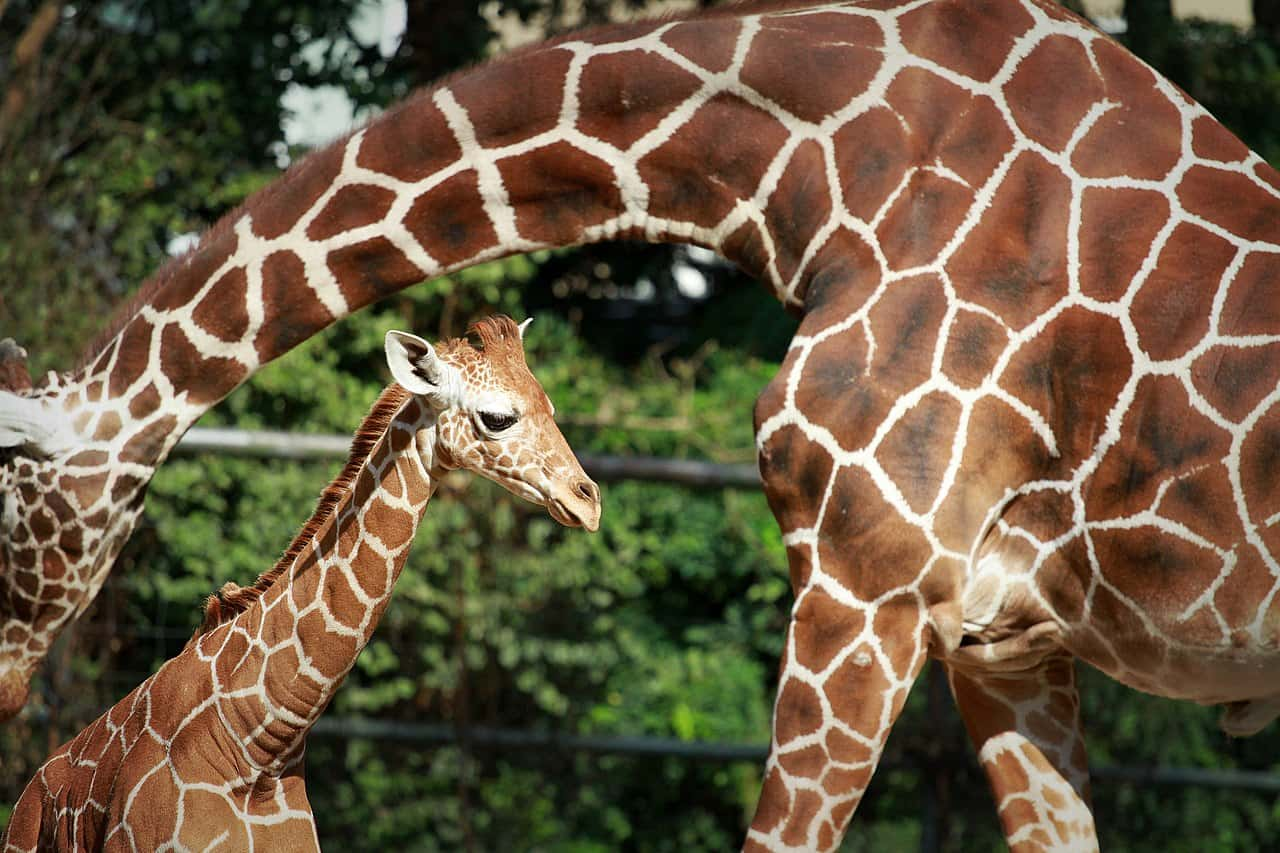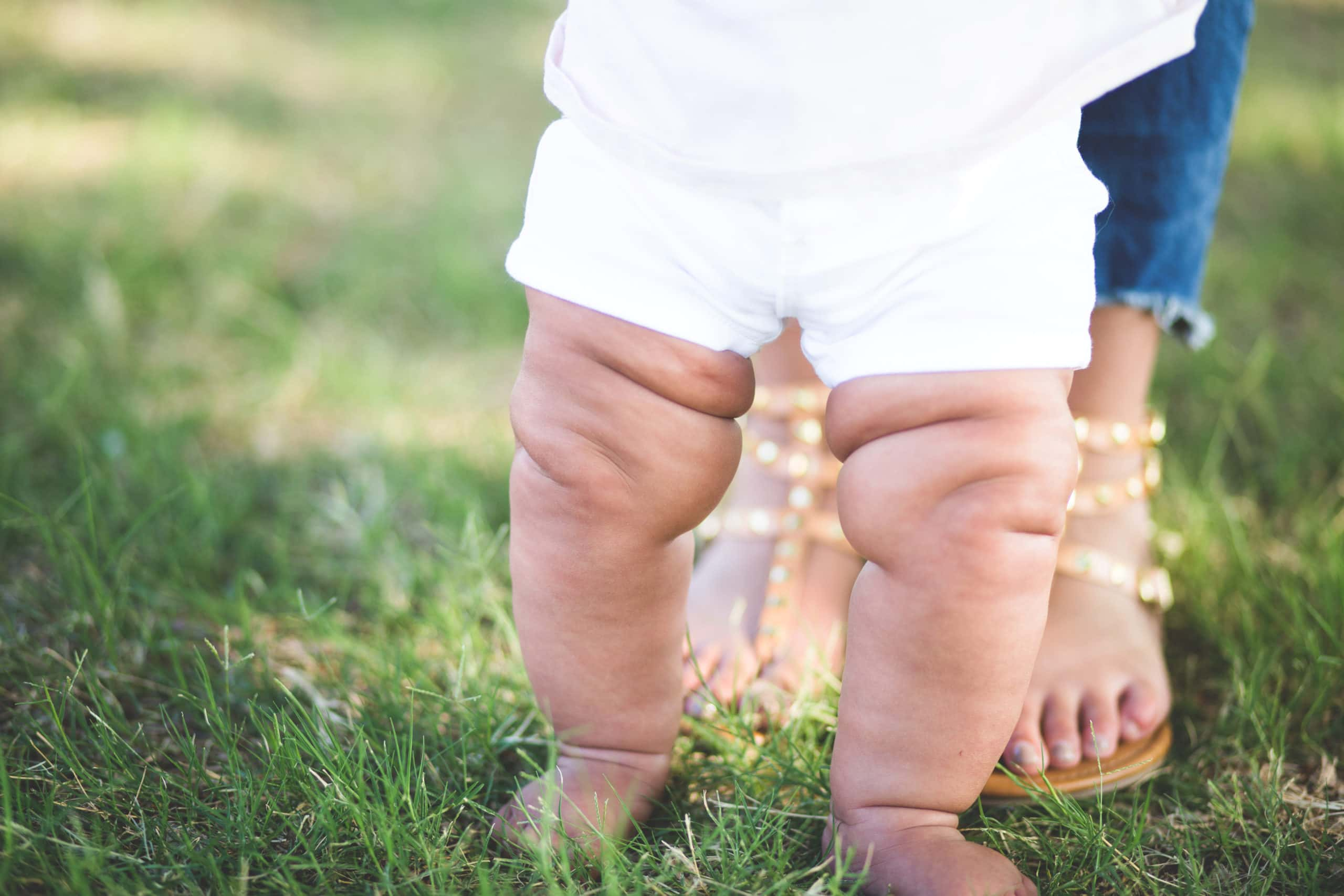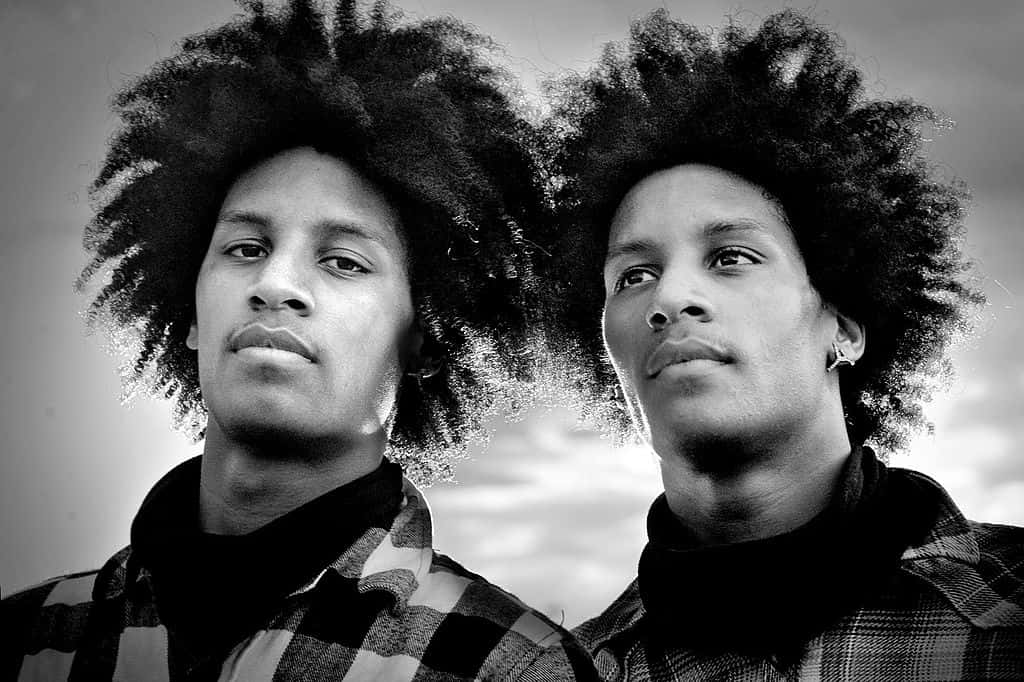Some people don’t know theirs, and some people have more than one, but everyone from the President all the way down to a snail has a MOTHER! We’re bringing you lunch-packing-est, owie-kissing-est facts all about the mommies in the animal kingdom (including humans, of course). Here are 42 facts about mothers and motherhood for your reading pleasure.
Motherhood Facts
42. Devoted
Octopus mothers are among the most devoted in the animal kingdom. After painstakingly selecting a place to lay her eggs, an octopus mom will not leave her nest at all until they hatch, which can be up to 40 days. She gently fans her 50,000-200,000 eggs with jets of water to keep them clean, and will not leave them even to eat. Octopus mothers have been known to eat their own arms in order to stay alive and protect their eggs!
41. A Different Kind of Octomom
Natalie (born Nadya) Suleman made headlines in 2009 when she gave birth to octuplets—six boys and two girls—that she conceived through in vitro fertilization. They were the second pair of live octuplets born in the US (though one child from the first, the Chukwu Octuplets, died a week after birth). Suleman’s situation generated public outrage, as at the time she was a single mother who was still in school, had no steady source of income, and already had six children. People who assumed she would come to rely on public assistance sent her death threats, and she was widely criticized and mocked by the media, being dubbed the “Octomom.” Dr. Michael Kamrava, who had implanted a dozen embryos into her, later lost his license due to gross negligence for orchestrating such a high-risk pregnancy.
40. A Good Start
All mothers in Finland are given a free “baby box” from the government to help start caring for their new infants. The box (which itself is fitted with a small mattress and can be used as a bed) comes with bedding, diapers, small toys and books, personal care items including a toothbrush and baby shampoo, and clothing (including winter clothing—it’s cold in Finland!). The boxes are intended to ensure that all babies have access to the things they need in early life, and correct for financial inequality that can make it hard to provide for a new baby. Baby Box programs have been spearheaded in Canada as well.
39. A Rose By Any Other Name…
It’s no coincidence that the word for “mom” sounds similar across different languages: after simple “oohs” and “ahh”s, “ma” is one of the first sounds babies are able to make. The sound for “m” is known as a bilabial nasal consonant and consists of voicing a sound using only the closed lips (as opposed to “d” or “g” sounds which use the tongue or “v” which uses the teeth). Be it “mama” in English, “maman” in French, “màna” in Greek, or “mama” in Swahili—babies’ abilities have given us the words for their mothers all over the world!
38. Not Far From The Tree
Steve Flaig, who was adopted at birth, searched for his birth mother for years with no success. When he was 22, after he'd already been searching for three years, he discovered new paperwork that explained his failure to find her: he had been spelling her name “Talladay” instead of “Tallady”. Incredibly, when he searched the correct name, he found that not only did she still live in the same town and the same neighbourhood, but that she was employed at the same Lowe’s hardware store as he was! She had been hired in April at the branch he had worked at for two years. Needless to say, he didn’t have to go far to find her and have a happy reunion!
37. Famous Products
Nancy Rogers was not only responsible for one of the most recognizable faces on TV, but she also created his wardrobe! Her son, Fred Rogers—you might know him as Mr. Rogers—was the host of Mister Rogers’ Neighborhood for decades, and Nancy hand-knit every single sweater he wore on the show!
36. Keeping Babies on the Inside
Unlike most jails and prisons, starting in 2007 Decatur Correctional Center in Illinois began a new program to allow some new mothers who give birth in prison to keep their babies with them for up to two years. Often, in prison, babies will be taken from their mothers after only 24-48 hours and raised by a relative or placed in foster care. In Decatur, the babies are able to be cared for and to bond with their birth mothers, which has a positive impact on both: out of the 63 women who have taken part in the program, only one has returned to prison, while in the general population the recidivism rate is as high as 37%.
35. Ch-Ch-Changes…
Besides the obvious changes to a woman’s body during pregnancy (enlarged breasts, growing belly) there are many unseen changes that happen as well. Base body temperature rises, increased circulation causes skin to brighten or change pigment, and feet can grow a full shoe size due to increased growth hormone! Plus, a hormone called relaxin can loosen joints and ligaments in the pelvis to make it easier for a baby to pass through without harming either baby or mother.
34. Enshrined
Rapper Tupac Shakur’s song "Dear Mama" was inducted into The Library of Congress Registry in 2010. Of the decision, The Library of Congress said the recording was ”a moving and eloquent homage to both the murdered rapper's own mother and all mothers struggling to maintain a family in the face of addiction, poverty and societal indifference."

History's most fascinating stories and darkest secrets, delivered to your inbox daily.
33. Always In Mothers’ Hearts
Babies may leave the womb, but they remain always in their mothers’ hearts… and brains, and blood! In the development process, fetuses send out cells that burrow through the placenta and uterus, migrate throughout their mothers’ bodies and stay there forever. It’s a phenomenon known as microchimerism and it’s thought to help strengthen the mothers’ immune systems. Microchimerism is not yet well-understood, but it could help explain why mothers of multiple children have lower rates of allergies and certain types of cancer.
32. Give and Take
Mother’s Day is the busiest day of the year for phone calls, while Father’s Day is the busiest day for collect calls!
31. Hard To Let Go
When a chimpanzee infant dies, its mother will continue to carry and groom the infants’ dead body for weeks or even months until the mother is ready to process the loss. By that time, the infant’s remains are usually mummified. Despite the intense smell and appearance of the corpses, mothers’ aren’t repelled by the dead infants, and neither are other chimpanzees, who continue to accept the grieving mother.
30. Changing Demographics
Today, 40% of women in America who have children under the age of 18 are the primary breadwinners in their family. In 1960, that figure was only 11%! And while 92% of mothers were married in 1960, today only 69% are married. Also, divorce rates have more than doubled—15% today versus 7% in 1960.
29. Spreading Their Seed
An ocean sunfish can release over 300 million eggs into the ocean during spawning season, making them the creatures with the greatest number of eggs laid. Of course, not all of those eggs are fertilized, and even after fertilization, not all eggs hatch—a large proportion are damaged or eaten by predators.
28. Like Bunnies
The phrase “breeding like rabbits” exists for a reason—the hippity-hoppity little critters reach sexual maturity after only 2-3 months and can give birth to up to 14 kits at a time (though the average is around seven). Plus, they can become pregnant again immediately after giving birth. That’s a lot of breeding in a rabbit lifetime! In Europe, bunnies only breed in the warmer seasons of spring and summer, which keeps their numbers in check. However, in warmer areas like Australia and New Zealand where they are an invasive species, they breed all year round, and their numbers can explode, wreaking havoc on local ecosystems.
27. Immaculate Conception
Virgin birth has only been recorded once in humans (though we’re not here to debate the historical accuracy of the Bible), but it’s actually very common in certain animals! Some types of scorpions, bees, amphibians, and reptiles are known to undergo parthenogenesis—that is, reproduction without insemination. Parthenogenesis ensures that if stranded, a female can still reproduce and keep her species going, but it does seriously limit genetic diversity.
26. A Push In The Right Direction
In 1919, the 19th Amendment to the Constitution of the United States—the one that granted women the right to vote—was passed in 1919, and won by a single vote. That vote was cast by Harry T. Burn, member of the Tennessee General Assembly. He originally was planning to vote “nay,” but received a short but to-the-point letter from his mother urging him to vote “yay”. “Hurray and vote for Suffrage and don’t keep them in doubt!” she wrote. Burn cast the deciding vote in favour of female suffrage, and later said of his decision: "I knew that a mother’s advice is always safest for a boy to follow and my mother wanted me to vote for ratification."
25. Mr. Mom
Seahorses are the only animal on earth where it's the males who give birth. Though fish don’t exactly have the same kind of identifiable genitalia that mammals do, they can still be classified by sex according to what types of cells they bring to the breeding table, be it eggs or sperm. Female seahorses transfer their eggs to pouches on the sperm-producing daddy seahorse’s body. He then incubates the little seahorses for 24 days, during which time he undergoes many of the same processes as pregnant females of other species. He supplies nutrients—energy-rich fats and calcium—to the growing embryos as their tiny skeletons and bony body rings form. He also removes carbon dioxide, nitrogen, and other waste products, keeping the little ones fresh and healthy. As the embryos grow, his skin pouch expands like a pregnant belly, and he produces estrogen—the same hormone produced by mammalian females. Finally, he gives birth to up to 2,000 little baby seahorses—and boy are they cute.
24. Babies Defined
The size of an animal baby relative to it’s mother usually depends on how much care it needs. Bigger babies that can walk and fend for themselves even minutes after birth are called precocial, while smaller altricial babies depend on their mothers for food, protection, and warmth. All animal babies will exist somewhere on this spectrum, whether they hatch fully capable of taking care of themselves and never even meet their mothers, or whether they are birthed tiny and helpless and remain with their moms for much of their lives. In case you couldn't guess, humans are about as altricial as they come.
23. Babies Big and Small
Baby giraffes have a long drop when they’re first born! In the wild, their mothers often give birth standing up, and the babies tumble up to 6 feet to the ground. A newborn giraffe, which stands up to two metres tall, can walk (albeit clumsily) at birth, though they still drink milk from their mothers until they are between one month and one year old.
22. Babies Big and Small - Part II
A 238-pound female Giant panda gives birth to hairless, helpless babies that are only three to five ounces in size—about the size of a stick of butter. That makes the mama 900 times the size of her newborn offspring. The wee cubs don’t open their eyes until they are six to eight weeks old, and are not mobile for the first three months of their lives. Giant pandas have the highest mother-to-newborn size difference of any mammal except marsupials.
21. But What About Marsupials?
Marsupials—including kangaroos, opossums, and wallabies—have an external pouch in which they incubate their young. The red kangaroo, for example, gives birth without a placenta to babies as tiny as a grain of rice, meaning they are 100,000 times smaller than their mother. The joeys are incubated in the pouch for up to 235 days before they’re ready to venture into the outside world—essentially until they’re ready to be born a second time.
20. Tipping The Scales
The heaviest human baby was born to Signora Carmelina Fedele in Aversa, Italy in September 1955. Her son weighed a whopping 22 pounds, 8 ounces.
19. Biggest Brood
The Tailless tenrec of Madagascar, which looks a bit like a cross between a possum, a hedgehog, and a toilet brush, can have up to 32 babies at a time. The naked mole rat (which looks exactly as the name suggests) has the second-largest litter size, giving birth to up to 28 offspring in one go. Mole rats don’t proliferate too much though—they live all together in dense underground burrows and only one female, known as the “queen,” is fertile at any given time.
18. A Long Time Without A Drink
We all know that human pregnancy lasts around 280 days or nine-and-a-half months. But when Beulah Hunter gave birth to daughter Penny Diana in 1945, doctors determined that her pregnancy had first been recorded on March 24th, 1944. That meant her pregnancy lasted a record-breaking 375 days, almost 100 days longer than a normal pregnancy. Time Magazine glibly wrote of Penny’s extra time in the womb, “Baby Penny Diana did have a knowing look about her.”
17. Thanks, Mom
Playboy Magazine exists thanks to a little help from Hugh Hefner’s mother. When Hef was starting out, he asked his father (who was a certified public accountant) for a loan to invest in the magazine. Hefner Sr. declined, and as Jr. was leaving, his mother took him aside and handed him $1000.
16. A Large Load of Laundry
The average human mother will have changed approximately 7,300 diapers by the time her baby turns two years old. The average diaper change takes moms around two minutes and five seconds—but it only takes fathers an average time of one minute and thirty-five seconds. Are fathers better at it, or do they just rush the job? I'm thinking the latter.
15. Grisly Realities
Getting a pet hamster or gerbil can seem like a great way to teach children about the cycle of life—but sometimes it can get a little too real. Gerbil mothers—and many animal species from bears to bunny rabbits—will sometimes kill and eat their young. This might seem horrible, but science says it’s not unreasonable: in cases where animals kill their own young, the babies are usually malformed or unwell, or there is a lack of food or other resources. Nature can be harsh, and if a mother will be unable to bring her young up healthy and alive, caring for them might lead to her own demise, so she must kill them. And if food is scarce, eating them for sustenance might be too valuable a resource to pass up.
14. A Large Club
Are you a mother? Then you might be one the 82.5 million mothers in America, and more than 2 billion worldwide!
13. Better Than One
Twins are fascinating, and as genetic science advances, we are now closer to knowing why some women give birth to twins. Women in families with lots of twins—especially among female relatives—are more likely to conceive twins themselves. There are different types of twins: identical, fraternal, and semi-identical (formed from the same egg by different sperm). And though it may sound like a plot from a soap opera, it is possible to have fraternal twins formed from two eggs by sperm from two different fathers!
12. What Are The Odds?
A woman’s chance of having twins is approximately 1 in 33. The tendency to conceive twins often runs in families, so the chance can be higher in certain groups. The Yoruba people of Nigeria have the highest rate of twins with 45-50 sets for every 1000 live births. The chance of conceiving triplets (or higher multiples) drops sharply: 1 in 540, though if a woman conceives multiples once, it’s likely that she will again.
11. Better Odds Than Ever
The odds of having twins is higher than ever as the rate of twins rose 76% from 1980-2009: from 18.9 to 33.3 per 1,000 live births. But why? Twins are often born prematurely, on average three weeks fewer than a full term pregnancy, so advancements in pre- and post-natal healthcare has meant that more babies survive pregnancy and birth than ever before. Plus, as more twins survive to have children of their own, the number of people with twinning genes increases, leading to even more twins!
10. The Pregnant Man
Thomas Beatie became the world’s first “pregnant man” in 2002. Born biologically female, Beatie identifies as a man and underwent gender reassignment surgery, and also transitioned publicly and legally. He met and married Nancy Gillespie and the couple desired children, but Nancy was infertile. Beatie, who still had a uterus, chose to become inseminated with donated sperm, and became pregnant. Beatie became the first legal male to give birth—a story which he turned into a book, and which he now tells across the country as a public speaker and advocate of transgender fertility and reproductive rights.
9. Test Tube Mama
The worlds of science and motherhood intertwined and changed forever in July 1978 with the birth of Louise Joy Brown, the first “test tube baby.” Brown was the first child born through in vitro fertilization, which at the time was still an experimental procedure. This made Lesley Joy Brown the first “test tube mother," after she carried a child who had not been conceived in her body to term. Four years after Louise’s birth, the Browns had their second child, a girl named Natalie, also through IVF. By then, IVF had taken off, and Natalie was the fortieth test-tube baby.
8. Bun In Another Oven
Today, fertility science is even more advanced, and the stigma of infertility is much less. Besides IVF, surrogacy is an increasingly popular option for women who are unable to carry their own child to term. Celebrities Sarah Jessica Parker, Nicole Kidman, Jimmy Fallon have children born via surrogate. High profile same-sex couples such as Elton John and David Furnish, as well as Neil Patrick Harris and David Burtka have used surrogates to have children.
In the United States, it’s legal to pay a surrogate for her services in carrying a child, and the cost can run up to $100,000, not including expenses such as lodging, food, prenatal care, and healthcare costs. In countries such as Canada and the UK, it is not legal to hire a surrogate for money—it must be done altruistically, though it is legal to reimburse a surrogate for expenses related to the pregnancy. Issues of parental rights and ethics surrounding surrogacy are in flux, and Thailand has even banned surrogacy of foreign babies because of past incidents.
7. An Old Tradition
Mother’s Day (as we know it) turned 100 in 2014 as mothers across the nation received cards, presents, and breakfast in bed. But Mother’s Day wasn't always a happy holiday: it was started by Anna Jarvis in 1908 as a way to honor the memory of her own mother and was made official by Woodrow Wilson in 1914. Anna called it “Mother’s Day” and not “Mothers Day” because she placed the emphasis on honoring one’s own mother, not all mothers. The holiday was quickly turned into a commercial goldmine, and Jarvis spent the rest of her life attempting to reform what Mother’s Day had become.
6. An Even Older Tradition
Celebrations of mothers and motherhood can be traced far further back in history than the time of Anna Jarvis. Ancient Greeks and Romans held festivals to celebrate the mother goddesses Rhea and Cybele, and Christians had a festival called “Mothering Sunday.”
5. Cuteness, Explained
If scent wasn’t enough, scientists also have a theory for why mothers find their babies so adorable. Scientists found that by distilling down traits of babies—big eyes, short flabby limbs, high pitched squeals—they could essentially distill the nature of cuteness, and try to explain it. Babies are born tiny, with short limbs, and their stubby arms and legs are covered with baby fat that they need to keep them warm and provide fuel for their growth. Also, babies are born with eyes the size they will have in adulthood, so they look big in a baby's head. These are features that have evolved to help babies survive, and humans have simply learned over time to consider these features "cute."
4. Long Time Inside
The average gestation period for an elephant pregnancy is between 640-660 days or 95 weeks. That’s approaching two years! Elephants have the longest pregnancies of all mammals.
3. The Sweetest Sound
Even before they are born, babies recognize the sound of their mother’s voice. A study in the journal Psychological Science in 2003 demonstrated that fetal hearts beat faster when listening to a poem recorded by their mother than when playing a recording of a stranger. The study involved babies in their third trimester, almost ready to be born.
2. Breeding A Small Army
The Duggar Family, of 19 Kids and Counting fame, have nothing on the wife of Feodor Vassilyev, a peasant from Shuya Russia. Her name has been lost to history, but by accounts kept by the Monastery of Nikolsk on February 27, 1782, she had given birth to 16 pairs of twins, seven sets of triplets, and four sets of quadruplets, for a total of 69 children. And just as amazing for the time, only two were recorded to have died in infancy. What’s more, after her death in 1782 her husband went on to have 18 more children (six sets of twins, two sets of triplets) by another woman, making him the father of 87 children. But, this isn’t a list about fathers.
1. So Cute I Could Eat You Up!
When a mom says that they could "just eat" their baby, it’s based on a compulsive urge to draw mama and baby closer. An infant's scent triggers the same physiological response in mothers as what is experienced by hungry people when presented with a meal. The response to nibble on cute knobbly knees or tiny toes seems to be an evolutionary response to bring mother and child physically closer. In the same study, researchers at the University of Montreal also found that “new baby smell” is as addictive to mothers as drugs or alcohol.
Sources: 1, 2, 3, 4, 5, 6, 7, 8, 9, 10, 11, 12, 13, 14, 15, 16, 17, 18, 19, 20, 21, 22, 23, 24, 25, 26, 27, 28, 29 30, 31, 32, 33, 34, 35, 36, 37, 38, 39, 40, 41, 42, 43, 44, 45, 46, 47, 48





















































